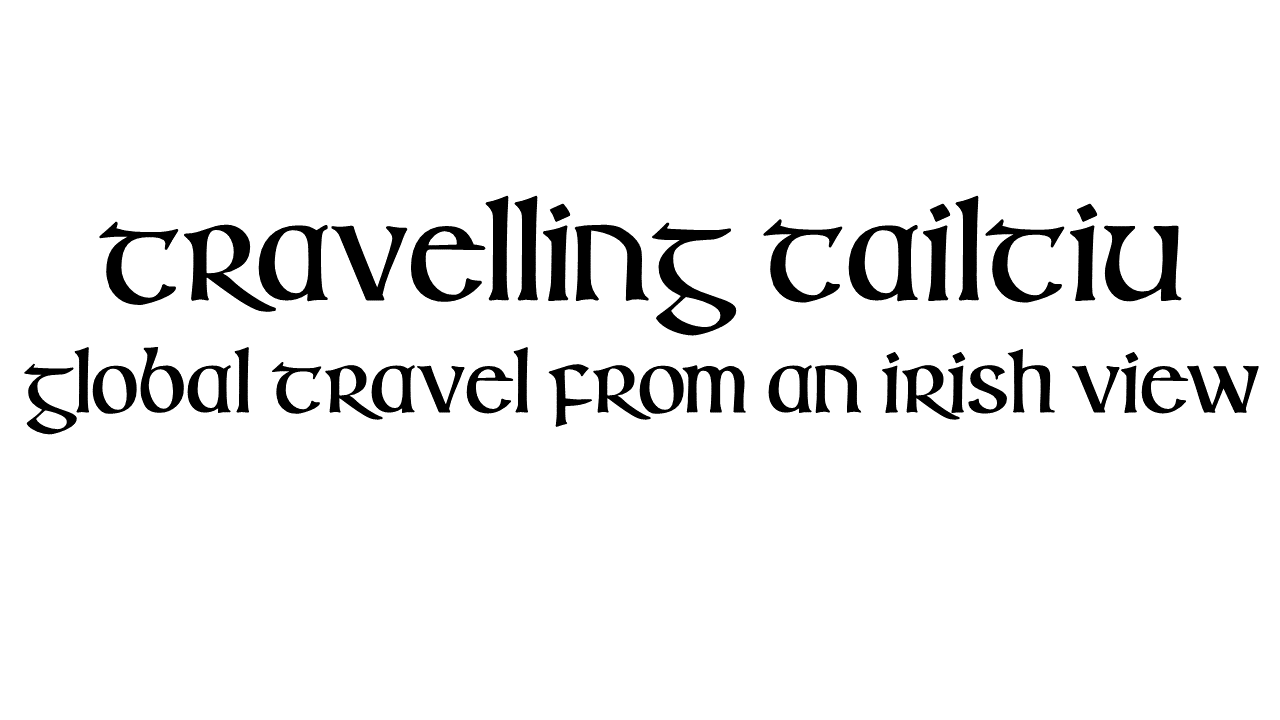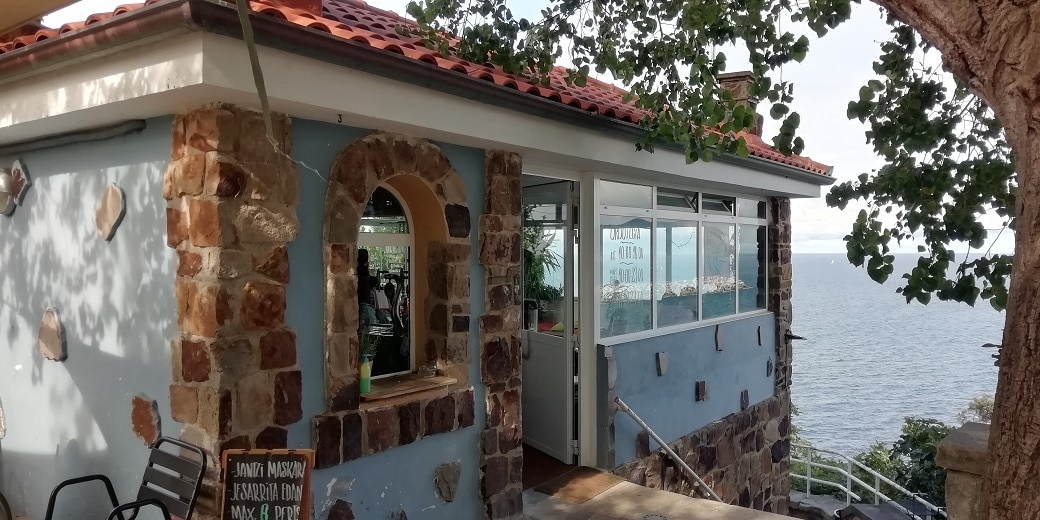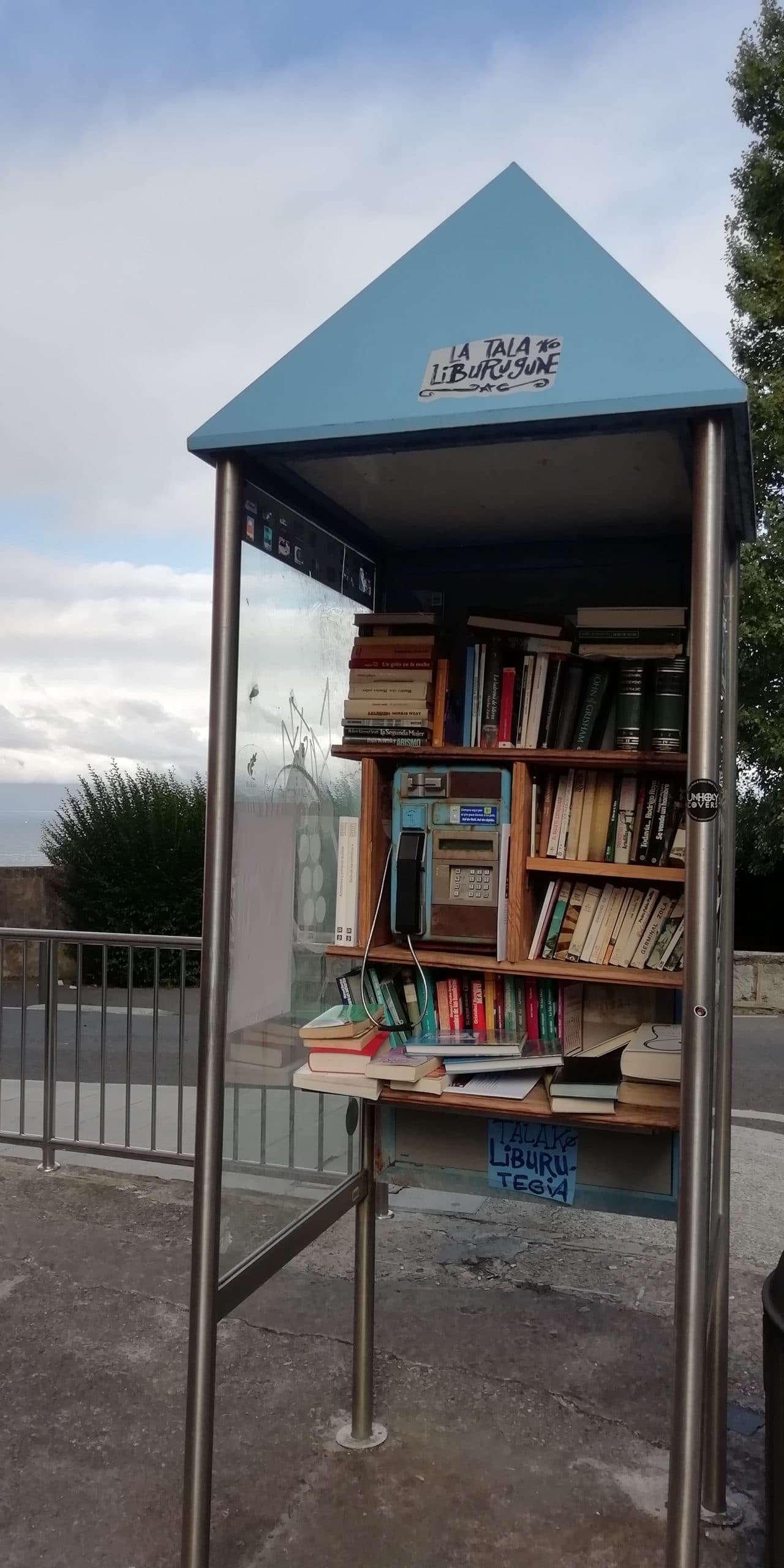Seawalking in Bermeo
You'll find a fair few things to do and see in Bermeo. This is a Basque fishing port on the coast of Bizkaia, close to Bilbao. You can get there by train or bus, and you'll cross some beautiful woodland to get there. The prices on public transport like Euskotren or Bikzkaibus should pleasantly surprise you if you are on a budget. A train or bus journey generally works out around €2 to this former whaling port of about 17,000 people. If you like sea walks and popping into bars or restaurants while enjoying the maritime views, this is the place.
It has a quare length of a seawall, stretching out into the Cantabrian Sea. A winter storm punched a few holes into it a few years ago, with giant waves tearing through it. The wall is now super-reinforced by huge boulders, ready for the next rough winter. It makes for a nice breezy maritime walk when the weather is a bit calmer. You'll also find a good few non-beach seaside options here, with boat trips and relaxation areas overlooking the shore. There are also beaches and world-class surfing options nearby in the neighbouring areas of Mundaka and Bakio.
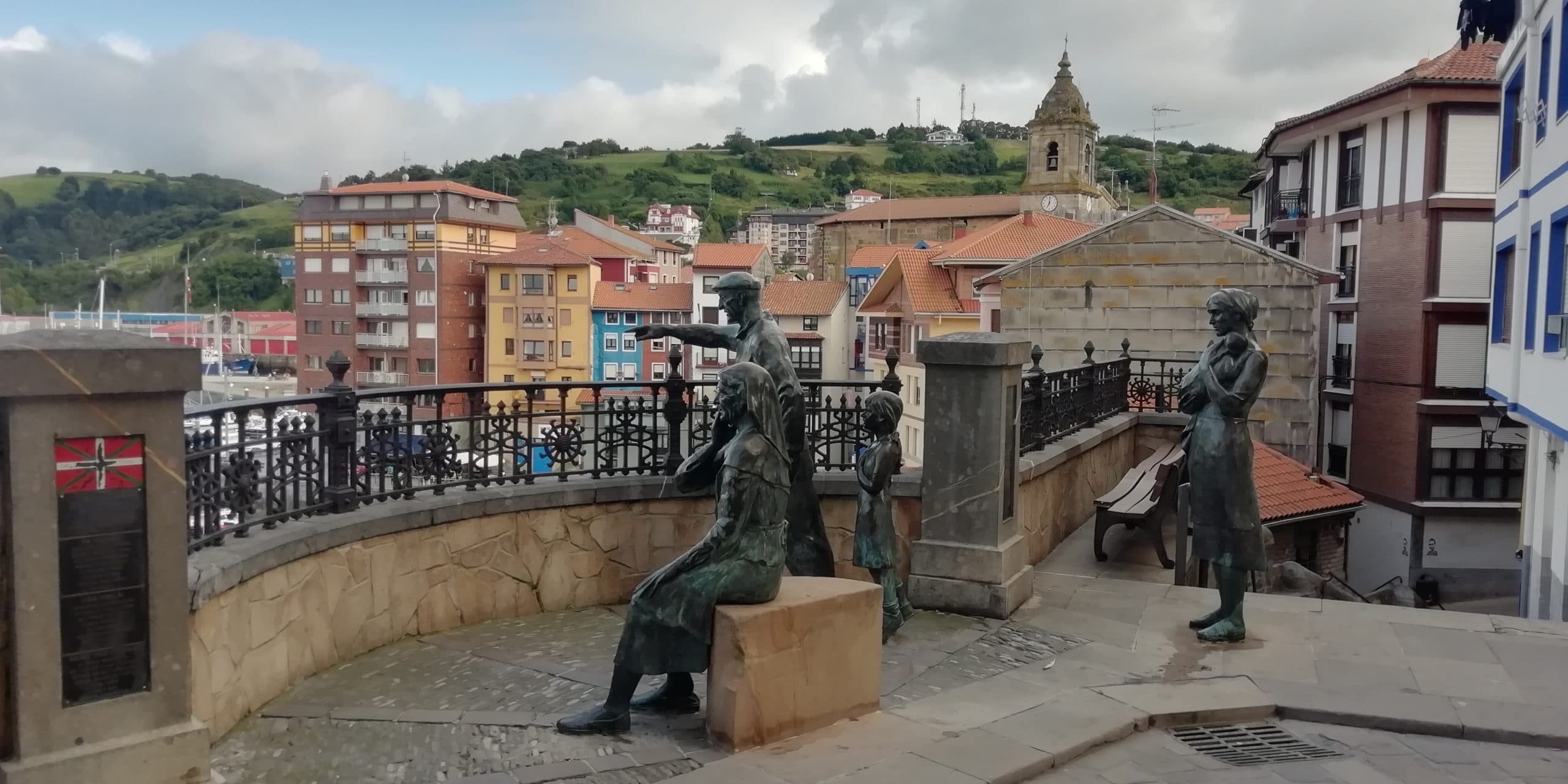
Statues depicting the anxious wait for the families of seafarers from the port of Bermeo
Walks by land and by sea in and around Bermeo
The fishing port of Bermeo is older than Bilbao and was famous for its whaling activities in the past. There used to be an old whaling ship moored at the side of this park though it seems to have disappeared for now. Luckily for the whales, most people visiting or living in the area nowadays only want to look at them. You can take a boat ride out into the sea and look for the whales and dolphins. It's also nice to see the coastal towns of Bakio, Mundaka and Elantxobe from a marine viewpoint. You will also see the hermitage island of San Juan de Gaztelugatxe from the boats. This is a glorious sight which came to global attention for the appearance of its zig-zag steps on HBO's series Game of Thrones.
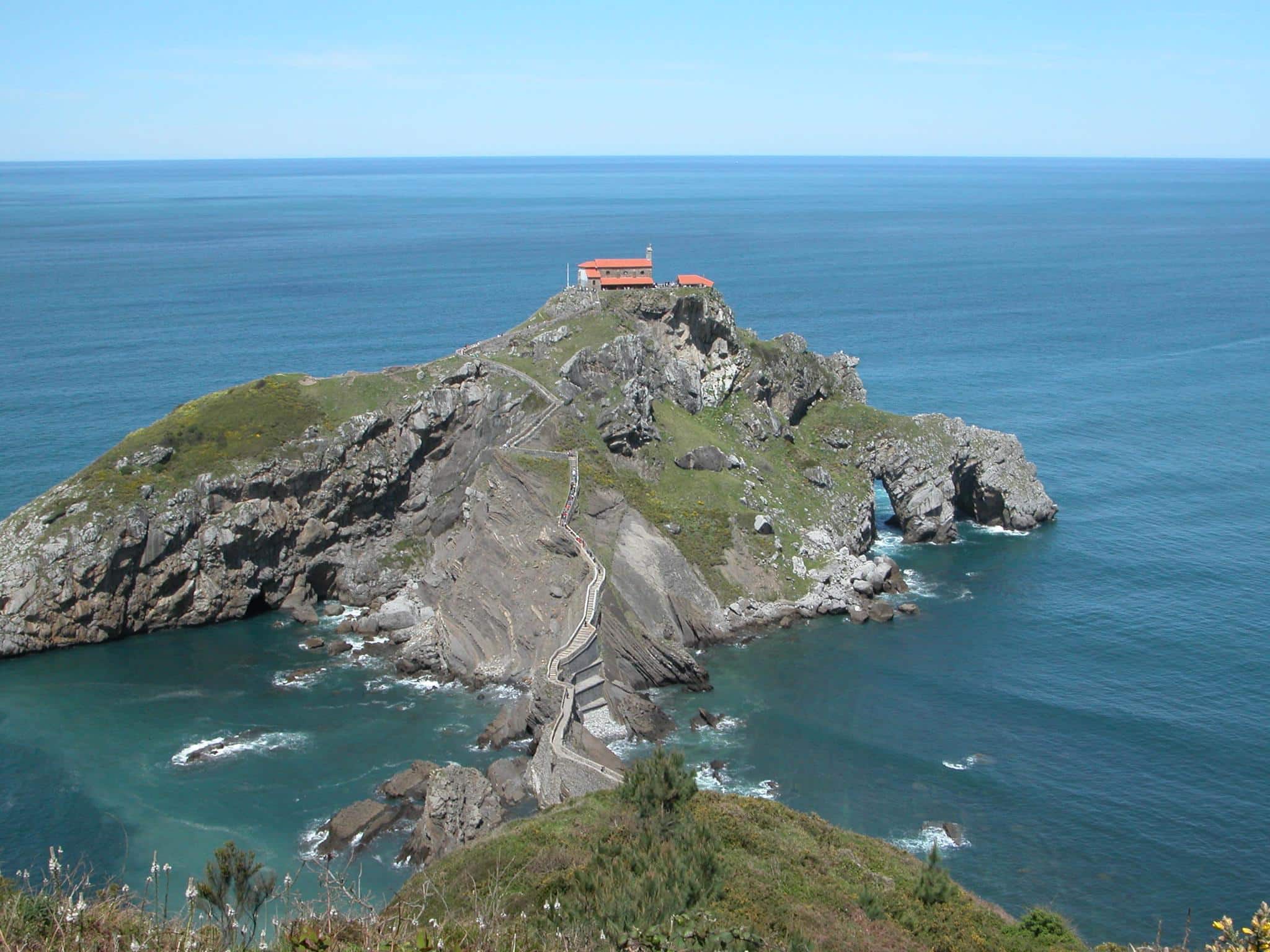
The majestic San Juan de Gaztelugatxe, close to Bermeo
When you are on dry land, you will need a good pair of walking shoes. A seawalk on the Bermean storm wall makes for a nice long windy walk. It has several levels so you can either stay low and walk alongside the fishing and industrial area or go higher. You can hop up top and peek over the top of the dyke to watch the waves crashing in from the Cantabrian Sea. It is frequented by local dogwalkers, joggers and of course the many visitors to the town.
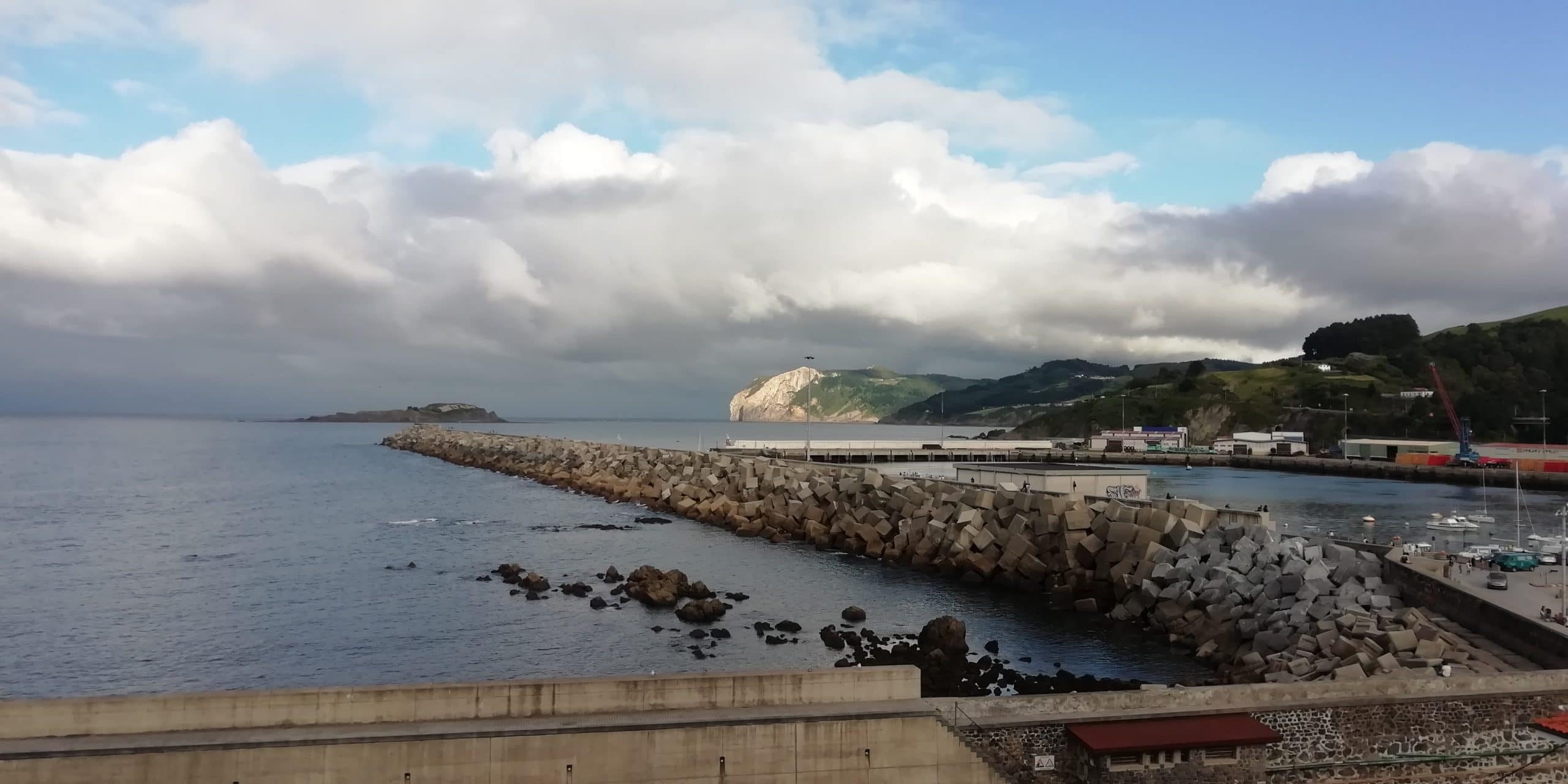
Bermeo's sea wall, or wave breaker, which is nice for a walk or jog
Before you get there, you will pass through a bustling marina, when coming from the bus stops or train station. There are five or six nice wee bars on the side where you can get a coffee, beer or pintxo. There is a nice sculpture celebrating dogwalkers with seats to relax on if you aren't in the bar. You can chill out and enjoy the view, stare at boats and even dream about owning one.
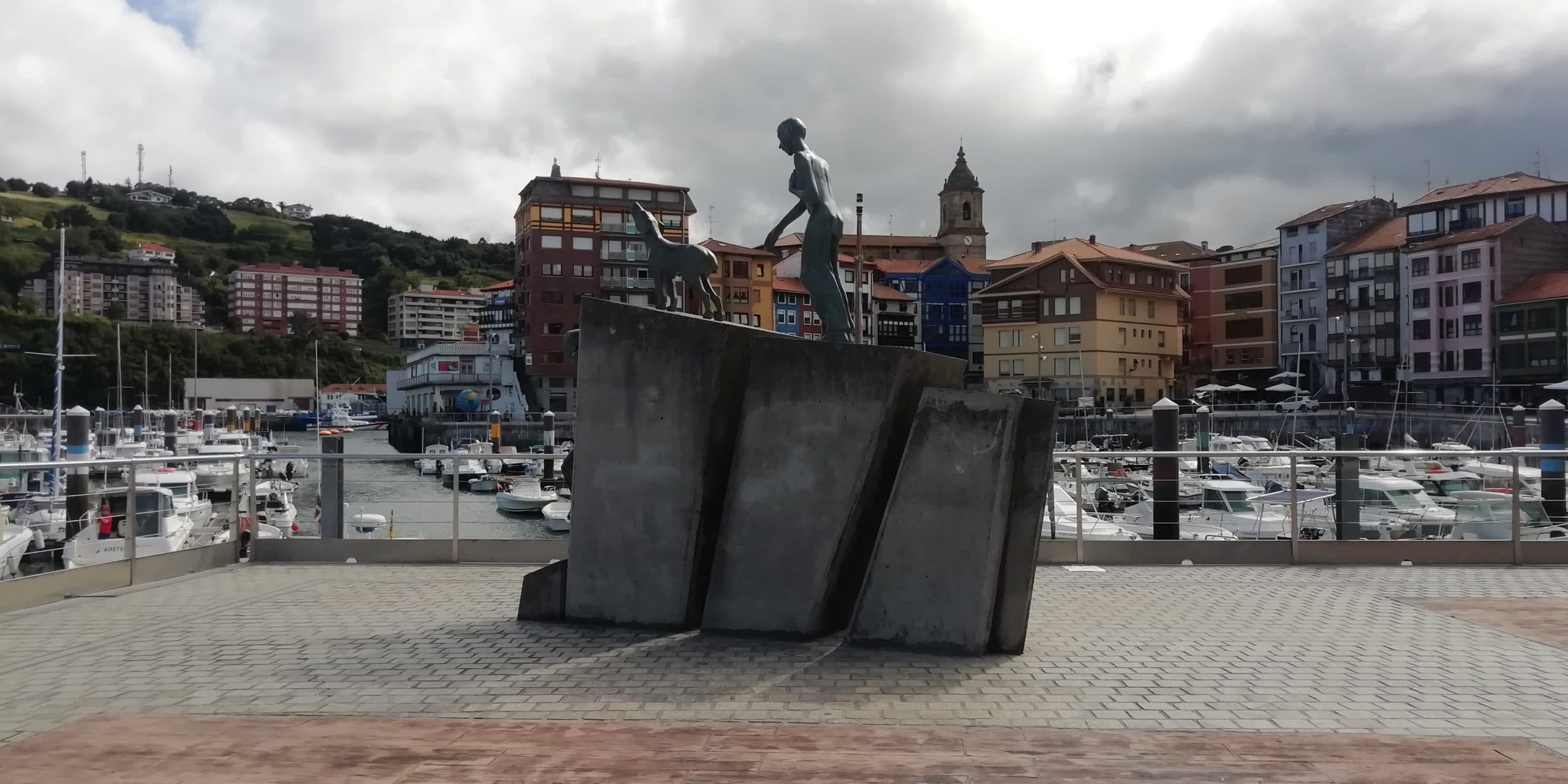
A celebration of the great heroes of our age, that is to say, dogwalkers!
Back to the old world
One great thing about the Iberian Peninsula is the municipal tradition of maintaining urban historical quarters. Modernity and residential areas will surround, neighbour or even blend in with these classic districts. That is true here and there is plenty to see in Bermeo's casco viejo, the Spanish name for the town's old shell. However, a fire ripped through this old town a few years ago, likely fuelled by internal wooden structures. Wooden structures are common in older buildings and make you think twice about buying around here. Normality has largely returned now though there are clues suggesting previous widespread damage.
A strong set of calf muscles should compliment your walking shoes to be able to see the best of the old area. There are a fair few ancient steps hewn into the hill taking you up from the waterside. At the end of the marina just before the sea wall, you can opt to turn left and up a set of steps. These climb up towards the old town. The old town is accessible at several points along the marina and there are other entrances. If you aren't into boats, go straight in from Lamera Park, beside the buses and close to the trains.
However, I suggest you see the marina first. Do the seawall walk and then return and head up into the old town. Make sure you stay close to the sea end as you do so. Then after traversing some more steps, hug the high coastline and walk a few hundred metres to Tala Park. This is an extensive relaxation area with a playground for families and a designated barbeque area. If you fancy loading up on meat, you can barbeque away while the kids have fun in the playground. Talako Park also contains a few more hidden gems.
The Chiringuito in the Park
A chiringuito (pronounced /cheer-een-GEET-aw/) is the Spanish word for a bar on the beach. OK, this bar isn't technically on a beach but it's right in the corner of the park overlooking the sea. It has some stunning views and sells some excellent and reasonably-priced local craft beers.
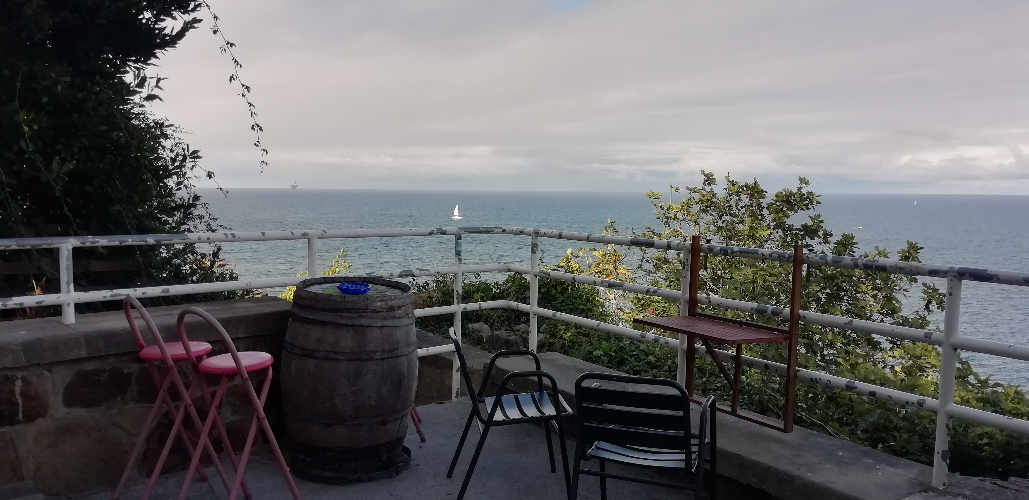
Talako Kantina Beer Garden, down the steps from the main bar and overlooking the Cantabrian Sea
The super-friendly staff here seem to know a multitude of languages. If you need an English speaker, then they are on hand. However, if you want to practice your Basque or Spanish, this is the place. It would actually be the perfect spot for language exchange events. It's also perfect as the bar you tie into the Sunday walk with friends, or whenever barbequing in the main park.
Fancy a book or donating one?
Every walk in the park, or to a park, should end up with the uncovering of a hidden gem like this. At the other end of the park, at the road into a residential area, there is a rusty old telephone box. It doesn't work any more but the old receiver, dialling pad and coin box are still there, surrounded by dozens of second-hand books left by the general public. A strange but welcome attraction overlooking the sea, it contains literature in several languages, including a Jules Verne set in Spanish, currently on loan by the Tailtiu author.
The phone booth book stall is a nice example of defunct technology from the previous generation repurposed for current use. It is definitely a cultural trait which you will notice more and more if you travel around the Basque Country. The nearby urban area of Bilbao has its fair share of post-industrial sites which artists and designers have repurposed and transformed into practical modern landmarks. You can check out more on this and the Basque habit of celebrating the past and showing optimism for the future by repurposing old tech in our article about the Iron Maidens, the working women of Bilbao's docks in the bygone industrial age at this link.
Leaving, picking up and swapping second-hand books might not be the first thing to come to mind whenever someone living locally or a tourist is planning a day out but it is definitely a nice surprise to find something retro and practical like this when you are roaming and exploring.
Heading back Through the gateways of history
Heading back down the hill towards town, you can see more of the ancient world when entering the old town through its historical gateway. It is the last remaining of seven and is known as St. John's Gate, as it leads toward the hermitage island of San Juan de Gaztelugatxe. John the Baptist has a legendary presence in the area, with various local folk tales. One local story talks of him covering the distance between Bermeo and the island in three great strides.
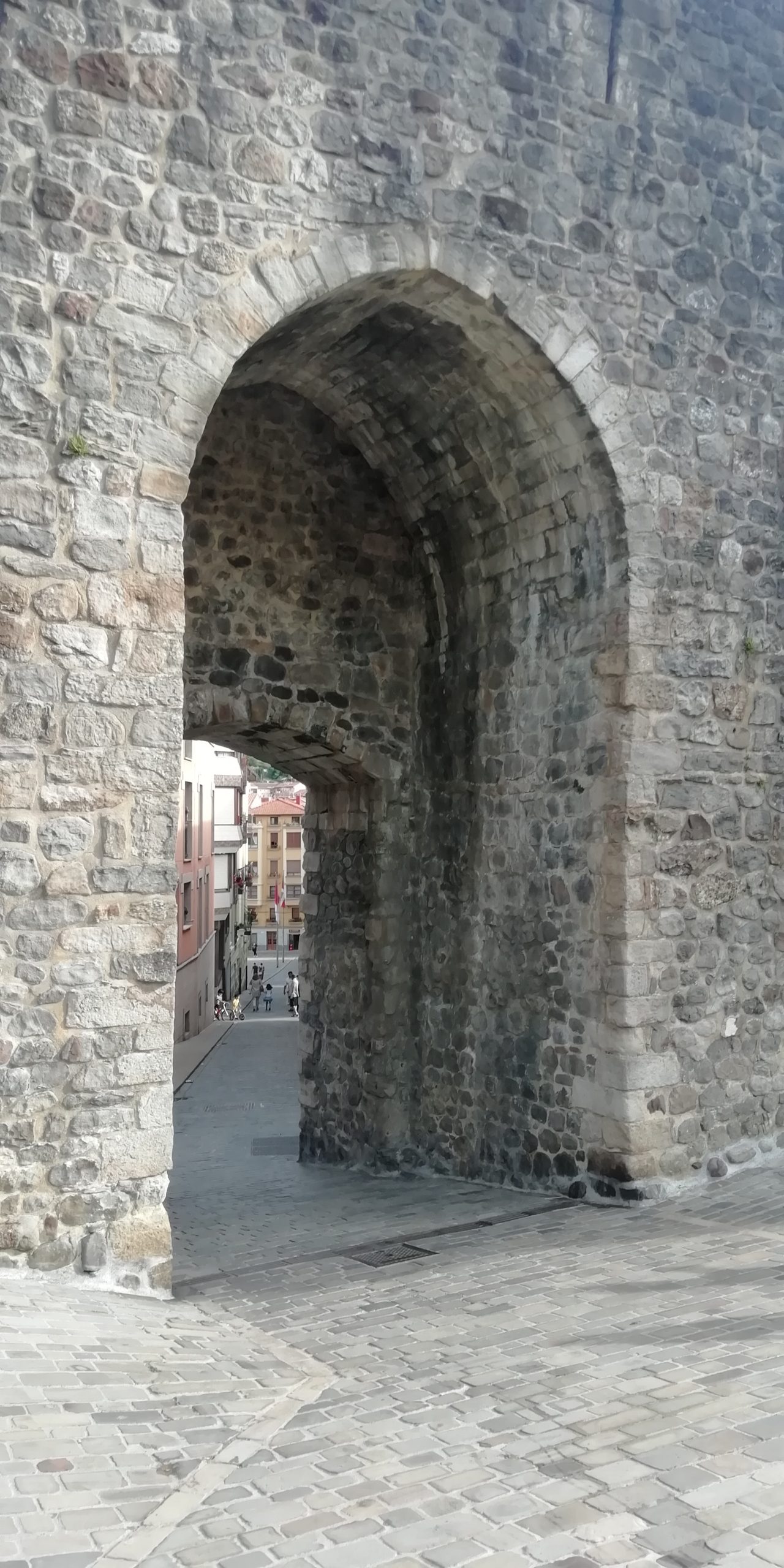
St. John's Gate, a historical gateway leading into Bermeo's historical centre
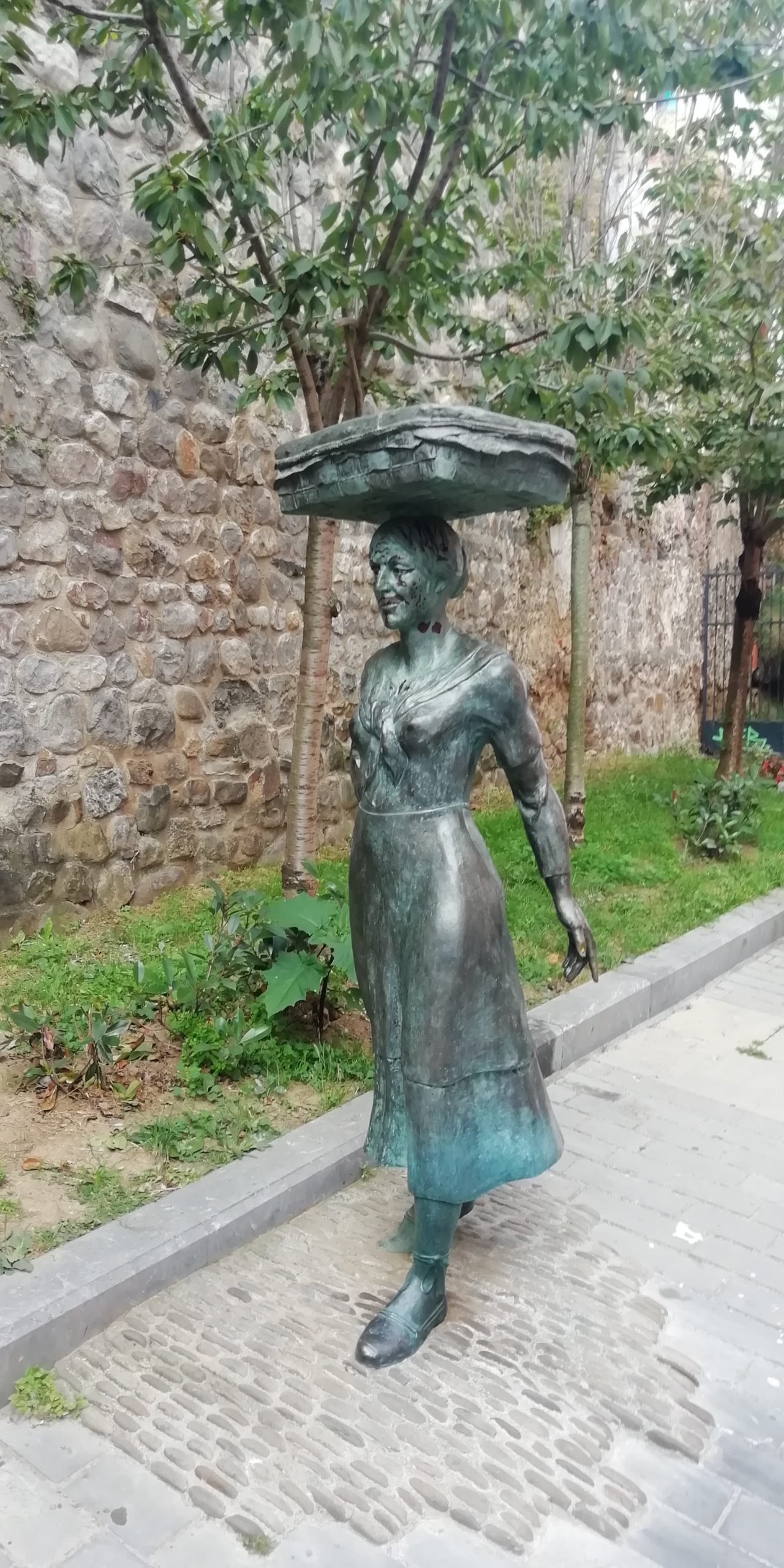
A depiction of a local woman taking the town's produce out through the gate to surrounding areas
Just inside the walls of the old town at the gateside, is a statue celebrating the contribution of women to the town's economy. The women would leave through the gate at first light, only returning at sundown, selling their fish in places as far away as Bilbao.
As we said earlier, the historical quarter suffered a fire a few years back but most historical buildings survived. The cobbled streets have history, bars and an occasional bit of social graffiti, with a few hidden gems for socialising.
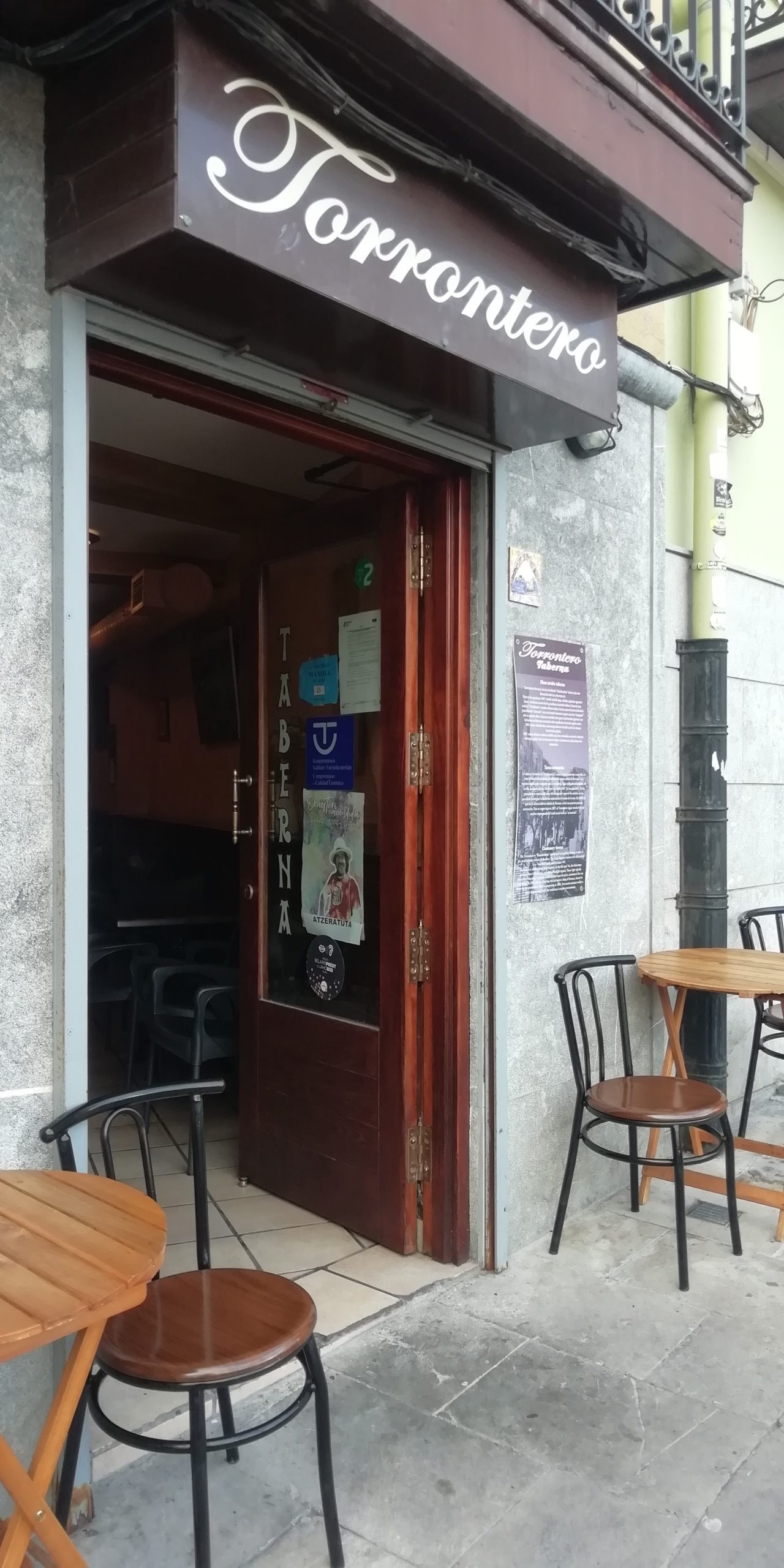
A century-old bar with a spectacular view of the sea and sitting beside a ton of history
Bars from the old school
One of these is Bar Torrontero, a bar famous for being over a hundred years old. Fashionably unimpressed as I know of a bar in Ireland which claims to be over a thousand years old, I still highly recommend Torrontero.
It's a friendly wee spot with excellent views, and outside the bar, there are statues depicting the worried relatives of mariners awaiting their return from the stormy seas. At the side of the bar, there is a historical tower with a museum inside, and a few other eating and drinking houses nearby.
Getting back
If you headed straight for the water after arriving off public transport, you will have walked over Lamera Park, containing a playground, restaurants and sculptures. The great thing about the Basque Country is that the cities and towns aren't massive but the have plenty for all ages and tourist types, including families. Bringing small children on holiday here is reasonably comfortable as there are facilities and families are welcome in bars, unlike in various other countries.
Getting to Bermeo without undue spending
You can find out more about how the Barik works at this link. Timetables in English are available for the train route to Bermeo from the transport stations in Bilbao at this link. Whenever you are planning trips across the Basque Country, the Barik is an excellent investment at €4. Barik cards are available from the machines in Bilbao metro stations, and these machines are also in English.
The trips are cheap though there are quicker ways to get around, like the bus, which is also similarly priced. However, try to get the Euskotren a time or two as it really gives you a feel for the Basque countryside. You will travel through a multitude of shades of green which compete with Ireland's 40. It is an enjoyable ride, though a bit slow, with traditional Basque architecture all along the routes. Car hire also exists in the Basque Country though you might have to search a little for parking. Parking might be easier in Bermeo's more modern quarter, given the narrow streets of the old town.
Final Thoughts
Overall, there are plenty of things to do and see in Bermeo on a visit or stay of a few days. Bermeo is definitely a place where I like to return to again and again. Each time we visit, something new and interesting always jumps out at the visitor. Remember to check out the rest of the Basque Country starting at this link. There are many places of interest not too far from Bermeo that you can programme into a tour.
